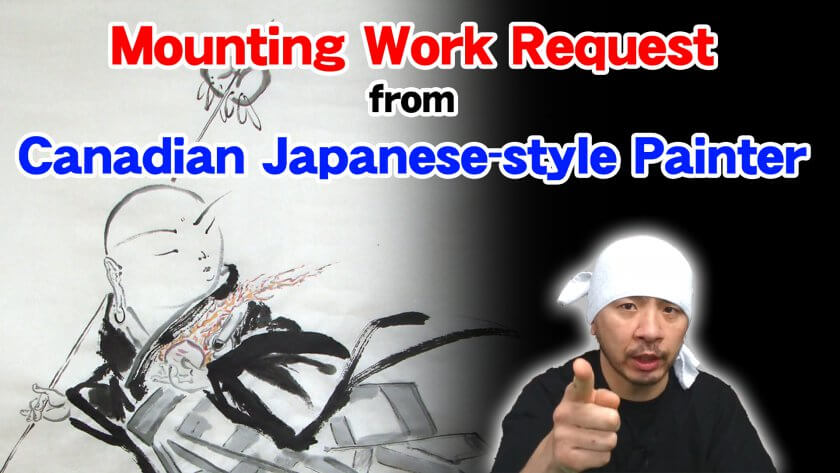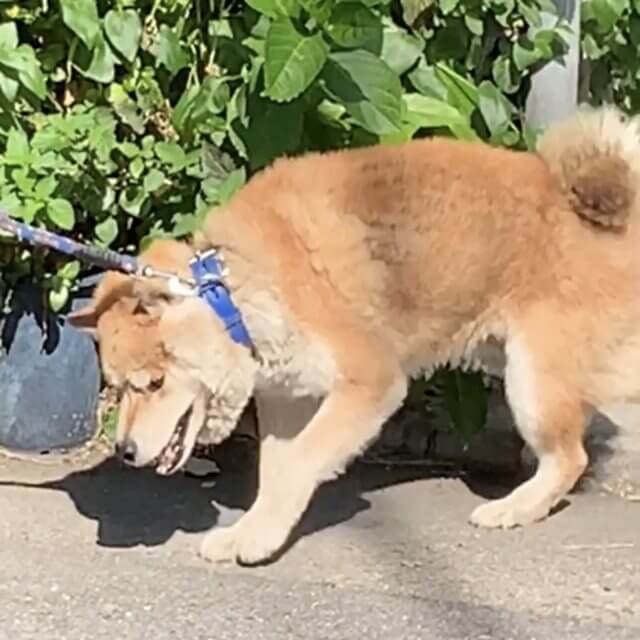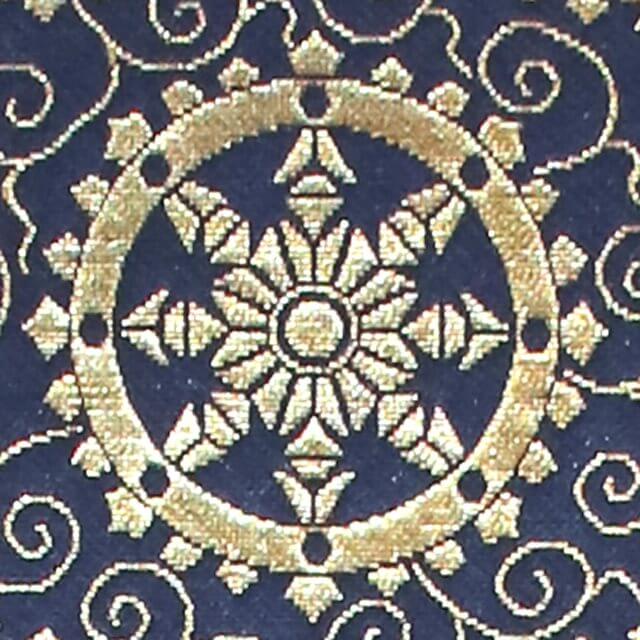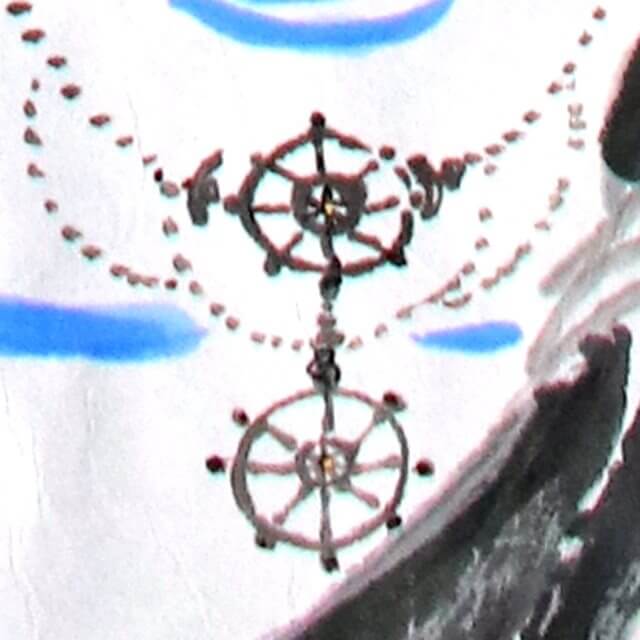Mounting Work Request from Canadian Japanese-style Painter

Mounting Work Request from Canadian Japanese-style Painter
Contents
Mounting Work Request from Canadian Japanese-style Painter
On this topic, I’d like to introduce the course of action taken to mount these four artworks.

Surprisingly, these works were drawn by a Canadian Japanese-style painter and honestly, I was taken aback by the skill of the Canadian depicting Japanese painting this good.
Here is ‘Lion and Peony’. The traditional Japanese subject of painting is vividly and beautifully portrayed.

The work below has a title, ‘Kissako’. It’s Zen terminology and if directly translated, it means ‘Well, please have some tea.’ Yet in Japanese tea ceremony, the terminology indicates ‘The importance of keeping the spirits of equality, serving tea for whoever they are.’ This work depicts a unique image of a fox who is serving tea and looks adorable.

I actually feel attached to it as the fox is almost identical to a dog who I bump into every day on my way home from work.

Fudō Myōō is depicted here. Being worshipped as the avatar of Dainichinyorai in Shingon sect, this Myōō is a very popular painting subject. The dynamic look of the cloud is nicely drawn.

The subject depicted here is Jizō Bosatsu. This Bosatsu has a very sweet expression. The composition of the Bosatsu being on top of a lotus must be tricky to balance the whole picture, still this artwork nailed it.

Mounting Process
Iro Dome / Color Fixing
Iro dome / color fixing is the first thing of a mounting process. The paint and ink on this work are meant to be sealed with glue but to prevent a big amount of water used for mounting from running the paint and smudging the ink, the paint and the ink are to be fixed.

As you see, spraying the work with a special purpose fixer to perform ‘Iro dome’. It should be noted that the moisture of the spray could smudge the paint, therefore an artwork should be sprayed little by little not in one go and in large quantities and spraying and drying are repeated alternately to build up a waterproof coating layer. It’s the key to make sure if the color is hold especially for artworks using easily smudged dark or bright color. Iro dome takes quite a lot of time due to the repetitive coating process.

Hada-Urauchi / The First Backing
Then next process we carry out is hada-urauchi/the first backing. Firstly, the wrinkles on the artwork are smoothed out by being dampen. It’s vital that the process is performed with the minimum amount of water to avoid smearing the paint with excess of water.

Then, spreading glue on the backing paper. As Japanese paper contains fibers running vertically and horizontally, spreading glue by stroking with a brush to both directions.

After spreading glue, removing the dust and dirt on the backing paper in case there were, one by one and as much as you possibly can. If they were left, they’ll be stuck between an artwork and a backing paper. The dirt tends to be almost microscopic in size still, we try to get rid of them as a matter of etiquette.

Now then, the backing paper is glued to the artwork with a brush.

Once the backing paper is glued to the artwork, pushing out small air bubbles stuck between them with a brush. Since stuck air bubbles separate an artwork from a backing paper when dried, it’s important to let the air out from there.

This air bubble pushing-out process is followed by a brush beating process on the flipside of the artwork. This method improves the adherence as the fibers of the backing paper tangle up with the fibers of the artwork.

After the backing work is done, the artwork is placed on a board to dry that is called karibari. For pasting the artwork to the board spreading paste around the backing paper and we call this paste mawashi nori.

Leaving the artwork in this state for a while. Moving on fast, as other 3 artworks are waiting for having their backing work done.

I’m finished with the first backing for these 4 artworks. It was exhausting. (Giggling) I didn’t need to do this all works in one go but as all artworks were drawn by the same person, I ended up doing so at one time. After spending 2~3 days to dry, we move on to the next process which is to attach fabric to an artwork called ‘tsukemawashi’.

Preparation for Tsukemawashi / Cut and Join
The artwork has dried up so it’s removed from the karibari board.

The artwork has been removed.

Nothing is remained on the board and it proves that the backing work was done without the mess. The rest of artworks will be removed with this way.

As all the artworks detached from the karibari board weren’t damaged, starting off the next procedure of attaching fabric to each artwork. First of all, the four sides of the artworks have to be neatly cut so as to attach the fabric to them.

Secondly, we prepare a matching fabric for each artwork. For the reason that the client this time is in Canada we discussed about his image of the mounting fabrics thorough messages beforehand. I created several image samples for each artwork and the client selected his favorite from the choices. The following picture shows the images of the mounting fabrics chosen by the client. We arrange fabrics according to the chosen images.

The preparation, cutting the fabric was done so I placed the cut fabrics around each artwork. I think it helps me to roughly get a picture of the finished kakejikus.

Here is ‘Jizō Bosatsu’. Purple is the color frequently used in Buddhism so it perfectly matches with Jizō Bosatsu the Buddhism painting subject.

This is the ‘Fox’ one. The color of the fox’s coat is in harmony with the color of the fabric which I find it lovely.

Then, I set the fabrics for ‘Lion and Peony’ and ‘Fudō Myōō’ around each of them.

A peony patterned fabric was selected for ‘Lion and Peony’ as peonies are drawn in the artwork. To go with the powerful image of this artwork, I chose a mounting fabric not only deep but sober in color.

Since ‘Fudō Myōō’ is Buddhist panting, it is to mount in Buddhist mounting style called ‘shin-no-gyō’.

This crest is called rinpōmon, the Buddhist symbol which has been used since an ancient time in Japan.

This rinpō is allegedly thought to be a weapon in Buddhism. I suggested this fabric on this occasion as rinpō is drawn in the Fudō Myōō artwork.

I assumed that Fudō Myōō with a tough impression should be compatible with rimpōmon fabric woven with gold brocade and I was absolutely pleased to know that I was correct. The artwork clearly stood out when the fabric was set.
Moving on to the next process of attaching an arranged fabric to an artwork called ‘tsukemawashi / cut and join’
Tsukemawashi / Cut and Join
Mimi-Ori / Folding Over the Edge
Making a Fūtai / Tassel
Finishing
Completion
At last, the mounting work for all these kakejikus was completed. Inside of the frame of the picture below is used up by 4 of the kakejikus not surprisingly. I’m satisfied with the look of all of them.

On the whole, sober colored fabrics were arranged for Jizō Bosatsu.
Lion and Peony kakejiku is harmonized with its fabric with a peony pattern.
The fox’s color was chosen for the fabric of Kissako kakejiku.
The dynamism of Fudō Myōō is enhanced by mounting the artwork with fabric brocaded in gold.
For mounting a kakejiku, bringing out the charm of an artwork by a variety of aspects such as the pattern, the color and the combination of the fabric is essential and this is where mounters can show off their professional taste.
It’d be my pleasure if these kakejikus that we made this time delights the client.
We take good care to choose fabric and arrange a mounting as you see on this episode so please don’t hesitate to contact us if you have any specialized inquiries.

Video:Mounting Work Request from Canadian Japanese-style Painter





